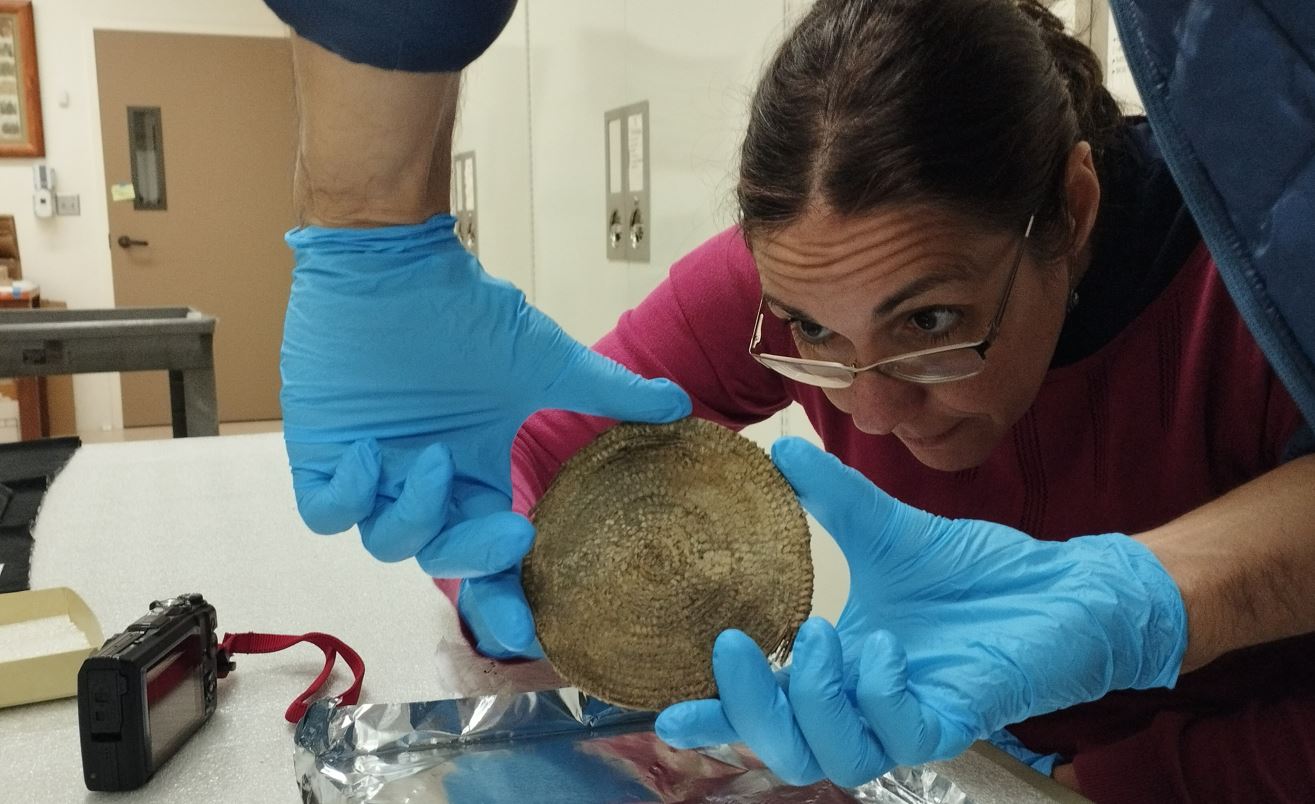Pollen is everywhere. It’s tiny, it’s light, it can travel long distances… You can find pollen in the fabric of your T-shirt, between the pages of the book you’re reading on the beach and in the structure of an archaeological object, for example. This innocent pollen can tell you what that object was used for, or where it was last used. Part of our trip in 2023 was dedicated to collecting pollen samples from archaeological objects in the Santa Barbara Museum of Natural History. This is interesting for MeSCAL because the pollen we find in archaeological objects that may have been used to process plants or contain plant-derived products can help us to answer some important questions. What plants did the Chumash use and for what purposes? Were there any changes in the native plants or practices after the Euro-American contact? Did the Chumash adopt some of the non-native introduced plants, such as for instance cultivars, after Euro-American contact or did they continue to use only the traditional native plants?
Unfortunately, sometimes the objects have been cleaned or the organic matter transferred to the piece after its use is, for some reason, gone. However, there is a last card to play, a last chance to answer these questions, you can go further and resort to the pollen washes. Because even when the visible organic remain has been removed, you can clean the piece to collect the pollen grains deposited on the artefact surface and embedded in the very same structure.

For two days we were allowed to enter the vault of the Santa Barbara Museum of Natural History and we could work with among incredible archaeological objects and, more importantly, an incredible team. The Museum’s Archaeology Department, hosted us during these days and made us feel at home. Their warm welcome and their constant attention made our task much easier and we achieved our ambitious goals thanks to their valuable cooperation.
Once installed, we followed step by step the strict protocol we had prepared. First, we noted down the name and reference of the object, we described the piece and the sampling area (it’s always better to leave some of the surface untouched, just in case someone else needs to do another test or we need to come back for more). Then we start the “onion protocol” which consists in cleaning the surface of the object several times and sequentially following artificial layers. The closer we get to the surface of the object, the lower the risk of contamination by current pollen or pollen deposited after the object had been used. That’s why we tried to make at least three layers, the outer, the middle, and the inner ones, which should preserve the purest pollen assemblage from the moment in which the object was last used.

This sampling with artificial layers came in handy a little later, when we arrived at the Laboratory of Paleoecology of the Northern Arizona University, in Flagstaff, where we processed the samples to extract the pollen grains. We could make environmental-friendly and sustainable analysis because of this choice of sampling. We started with the inner layers and, depending on their pollen content, we could decide whether to continue with the outer layers. If one of the layers closest to the artefact surface, with the purest pollen signal, was sterile, it was not necessary to continue with the other layers. This helped us to save acids, produce less toxic residue, and we waste less energy.
Once processed, the samples had a tricky journey to our lab in France, but finally they arrived in Montpellier, and now it’s time to sit under the microscope and see what these objects have to tell us. While we do so… take a look at this paper to know more about this amazing methodology!